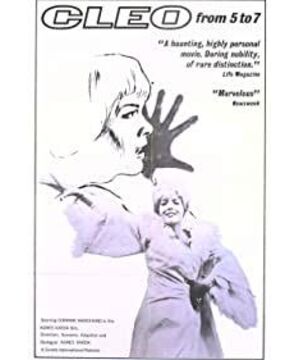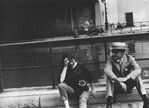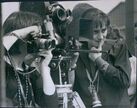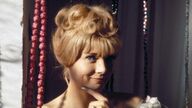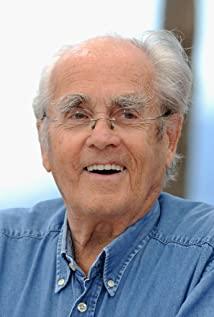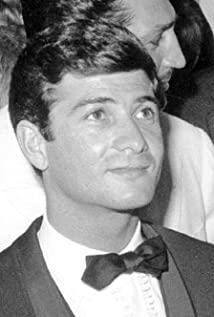The host Northwest vanishes into nothing
Hello everyone, welcome everyone to the 22nd Faroe Island Film Festival main competition round table on the 4th day and the 2nd game. I am the host of the Northwest Disintegration. In the second game, the movie we discussed is Agnès Val. Director Da's "Cleo from 5 to 7:00", all guests are invited to give a score based on their own magazines and talk about the reasons for this score, and briefly describe their thoughts on this movie!
On-site guest Ou Yin
I gave 3 stars to Cleo at 5-7. The concept of "real-time movie" should be viewed together with the new wave concept and audio-visual technology breakthrough, but in fact, this kind of real-time is still deceptive. The subjective perspective, self-awareness, and color need not be mentioned more. We focus on two details: the use of mirrors is not only the expression level of inspection and gaze direction, but also the magical effect of expanding the space in the scene to enhance the compositional level; The repetition of emotions, the film uses many details to repeatedly evoke Cleo's fear and sadness, especially the singing section is the most penetrating. In addition, the appearance and interaction of Anthony in the latter part of the movie is unconvincing from my point of view.
Guest of the Field Magazine Orange
4 stars. From fearing death to embracing new life, from the pessimism of "as long as I am beautiful, I am alive" to the infinite optimism of "we still have time", the interlude "The Fiancee on McDonald's Bridge" is all in one sentence - excerpt Before taking off the "sunglasses" is tragedy, after taking off "sunglasses" is comedy. The jump that Cleo used when walking down the stairs at the beginning I thought was a lot smarter than the jump that Godard used in "Exhausted." Varda uses the ingenious combination of mirror and lens language to express Cleo's complex state of mind. The wonderful scene and atmosphere presented by the interaction of mirrors and people between Cleo's wandering and the commodity window in the middle is even more so. lingering in my mind for a long time. Cleo's five to seven o'clock, the last half an hour before shooting, is the chapter that is truly full of the graceful melody of life.
Guest Muzhi
I give "Cleo at 5 to 7" 3 stars, the format is very novel, the time of the film is synchronized with the time of reality, showing two hours in a woman's life, Varda is very delicate, the film is full of Thinking about life, the heroine pulled off the wig in the second half to start the freshman to find himself.
Published guest Cuckoo porcupine
4 stars. Because of romance. Under the shape of the beautiful image, you can feel the vitality of this character, Varda provides a delicate perspective and a flowing experience,
The host Northwest vanishes into nothing
The first question today is that the film has always followed the heroine’s footsteps, closely following the time scale of “five to seven o’clock” written in the title, dividing the chapters with the flow of time to create precise and rigorous isochronism. State display and emotional communication both play a role. What do you think of the strong formal character of the film, is it deliberate, or is it really necessary for the thematic expression?
Guest Muzhi
I think it is not deliberate for this film, but it has played a great role in highlighting the theme (depicting the life of Cleo from 5 to 7 hours).
Guest of the Field Magazine Orange
I don't think it's deliberate, it's just a way to break the fourth wall. The tight time shackles in the first hour become more and more loose in the second half hour, and the transformation from the viewing object to the subject is completed.
On-site guest Ou Yin
I prefer some valuable and novel sense of form. For this work, the time experiment is not just an attempt/gimmick, but to a certain extent, it represents a boundary of authenticity in the new wave system. explore. It has a positive effect on character state presentation and emotional communication, allowing viewers and characters to experience at the same time.
Moderator , Northwest Disappears
Can we expand on this exploration of the boundaries of authenticity? This aspect can be discussed in detail in conjunction with the overall pioneering nature of the new wave.
On-site guest Ou Yin
One of the more important concepts of the new wave is not to emphasize that the language of the lens should reflect the reality, that is, from long shots to some anti-traditional designed narrative modes (the real world will not be so compact or dramatic) are already taken. The pace of the film, but these are actually still under the time scale of the film. And ideas like "Cleo at 5-7" are actually an exploration.
Moderator , Northwest Disappears
Yes, I think so too, it's more vivid than just shooting with a long lens.
On-site guest Ou Yin
In terms of expressive effect, it can be considered that a kind of emotional coherence is maintained, which is a real state that many traditional films cannot present.
Moderator , Northwest Disappears
Even the isochrone in "Cleo at 5 to 7:00" is actually not exactly one second, but this does not affect the audience's complete acceptance of emotions. After all, this is still a work of art, not a complete reproduction of reality.
Published guest Cuckoo porcupine
Wow, well said, I also think it is necessary, a seemingly objective scale appears ambiguous under the surging emotions. Your question is great, I think deceit is necessary for my viewing, rendering a kind of thickness and meaning of life. Then maybe (if) you can abstract this timescale as a condensed version of the ups and downs of life.
The host Northwest vanishes into nothing
The next question is about the status and fate of the heroine. From the first shot of the whole film, the tarot card predicting fate, the heroine's emotions have always been shrouded in a kind of panic and anxiety about the unknown disease, and in the last scene, she was told by the doctor that there is no serious problem. The heroine smiled at the young soldier who was about to go to the front line of the war and his fate was uncertain, and said, "My fear seems to have disappeared." In my opinion, this is a delicate and complex emotional transformation, making a brief acquaintance and an imminent separation. , and maybe even farewell, the two are full of hope and courage, warm and vivid. Would love to hear your thoughts on this transition.
On-site guest Ou Yin
This transformation can be said to be a big frame of the film, and it can even be considered a MacGuffin. On the other hand, there are many rich and delicate emotional changes in the film, and at the end, a more macroscopic change is needed to complete the closure of the play.
Published guest Cuckoo porcupine
After reading your description of emotional transformation, I think that the film reaches a very touching point (perhaps a self-love understanding) that no one is an island, and two people's emotions can be conveyed to each other, Or in the same field they share the same energy field and influence each other. It is an affirmation of the possibility of empathy.
Moderator , Northwest Disappears
I suddenly understood after saying this to you. In fact, the relief of the heroine also passed on to the soldiers a stronger optimism and courage.
Guest of the Field Magazine Orange
Panic and anxiety about the unknown disease is just an opportunity for the heroine to move towards her true self, and the smile with the strange young soldier at the end completes a transformation of the film's theme, that is, from women's pursuit of the true self to a macro-emotion of all human beings The gradual loss of the audience's sense of surveillance in the second half is also to achieve this goal, that is, a macro empathy.
Moderator , Northwest Disappears
Ou. Yin guest mentioned in the previous short comment that he thinks that this turning point in the second half is unconvincing. Why is it because I didn't think there was such a big change in a short period of time?
On-site guest Ou Yin
I feel that the lack of convincing may not be the turning point itself, the turning point is necessary, but in the way of implementation. Specifically, it may be the way the male and female protagonists know each other, the character characteristics of the male protagonist, the interaction between the two, and the design of the environment. It may also be due to the limitations of time and space, and the processing difficulty itself has also increased.
Guest of the Field Magazine Orange
It's not just about two people, it's about the audience. The soldier itself may also be the projection of the audience's subjective image
The host Northwest vanishes into nothing
The third question is about the background of the times in the film. Although the whole film takes place in France and revolves around the social and life circle of the heroine, it is also broadcast through the broadcast and the young soldiers who are about to go to the front line who appear only in the second half of the film. The moment of confession reveals the social context in which the story takes place: the war between France and Algeria. This also seems to give this seemingly purely personal experience a strong sense of the times. The uncertainty of the heroine's individual fate seems to suddenly have a connection with a larger era. What do you guys think of this design?
On-site guest Ou Yin
I haven't paid much attention to this dimension before, and I agree with Ximei's interpretation. The comparison between individuals and times is more meaningful, and at the same time, it may also enhance the pursuit of true attributes.
Guest Muzhi
I thought of the way of filming the news at the end of "In the Mood for Love", probably to show that although Cleo from 5 to 7 o'clock is full of time for a whole movie, it is only a very small part of the vast history. the audience's vision.
Guest of the Field Magazine Orange
I haven't paid attention to this before, and I agree with the views of Muzhi's guests. It may also include Varda's concern for all human beings, which is also closely related to the theme.
Published guest Cuckoo porcupine
My idea is that through the heroine, the audience can't really feel the horror of the front line, and this is what women faced at that time: the division of reality, the suspicious pursuit, the anxiety of the body, etc., and the most important thing for the "real world" is The knowledge of war is also limited to an encounter.
Moderator , Northwest Disappears
After all, Varda put this background on the role that is crucial to the heroine's transformation, as if to say that even if everyone is swept up by the times and cannot help themselves, we can still embrace the people around us to make the weak love as a defense, dispelling helpless fears.
The host Northwest vanishes into nothing
This film is also one of the representative works of the French New Wave. There are two other works in the main competition unit, "Do As You Want" and "Ancestor and Zhan", which also belong to this series, and it happens that all three works have important and distinctive features. As for the female image, you can make a little comparison, and briefly discuss whether the female images in "Cleo from 5 to 7:00" and the two films have something in common or have different emphases in the dimension of related works of the new wave.
Published guest Cuckoo porcupine
The common denominator is that they are all beautiful and agile French women, and their needs for material things are always difficult to meet; the difference is that part of Godard's inspiration in "As You Like It" comes from gazing at the fragility of women.
On-site guest Ou Yin
"Do whatever you want" I don't think I understand it very well. "Zu and Zhan" and "Cleo at Five to Seven" feel different. The heroine of "Zu and Zhan" must be a woman, and she needs to support the setting of the three-person relationship. The heroine of "Cleo at 5 to 7" is more universal. If you replace her with a man, the core emotional fluctuations that she carries are the same, but in actual processing, women are obviously more Appropriate, because women as the main body, their emotions are more abundant and natural, and they can better bring out many points such as characters staring and being stared at, and self-awareness awakening. So in general, the emphasis may be somewhat different in the movie. The more important thing in "Zu and Zhan" is what kind of person she is, and the more important thing in "Cleo from 5 to 7 o'clock" is what kind of situation she is going through.
Guest Muzhi
Agree with Ou Yin's point of view, "Zu and Zhan" is a third-person perspective, and "Cleo at 5 to 7" is easy for people to take the role of the heroine and experience what she has experienced with her.
Moderator , Northwest Disappears
"Cleo from 5 to 7:00" should be my favorite movie in this main competition, and it also guided me to think about a lot of questions, both about movies and reality. Thanks to movies, thanks to life, and hopefully one day we can all get that epiphany, relief, and courage.
View more about Cléo from 5 to 7 reviews


